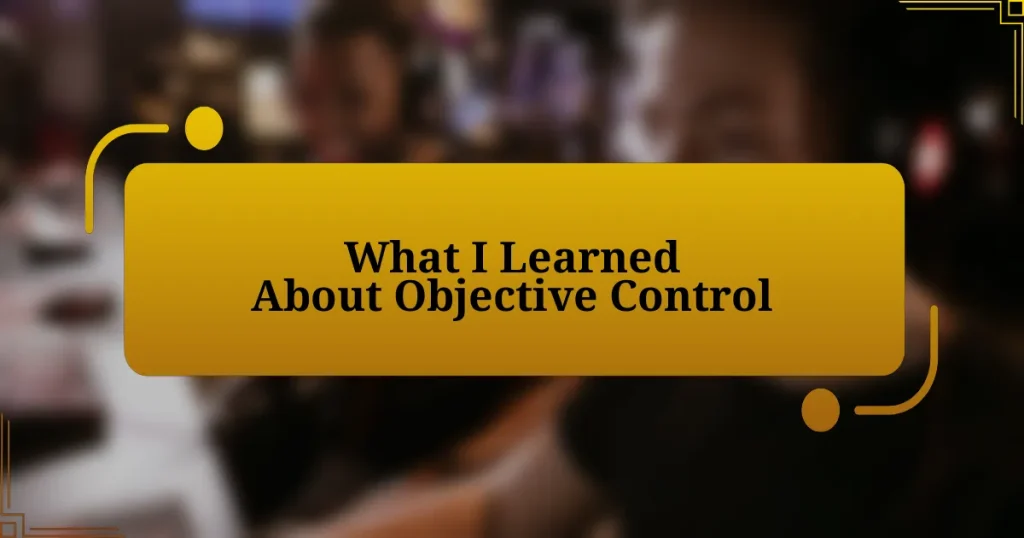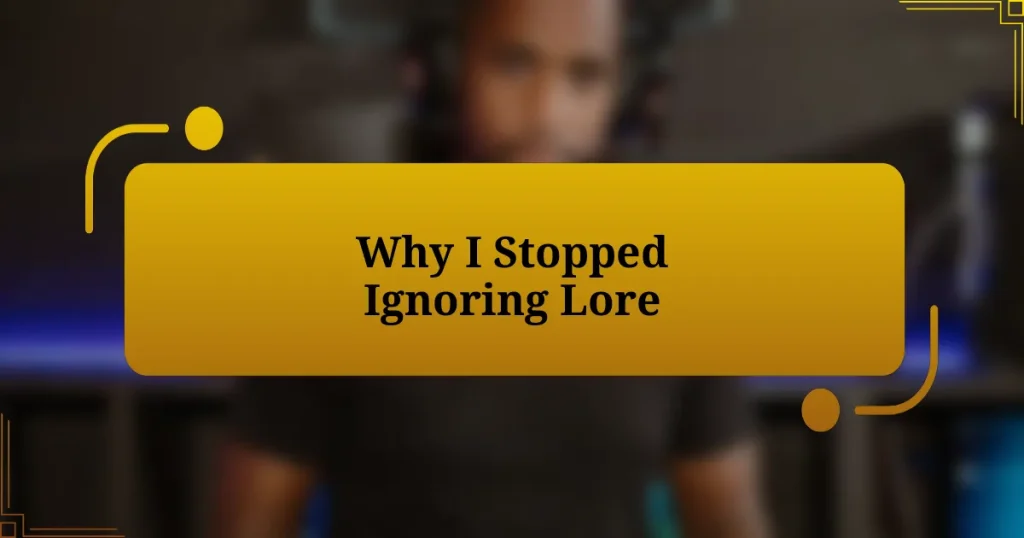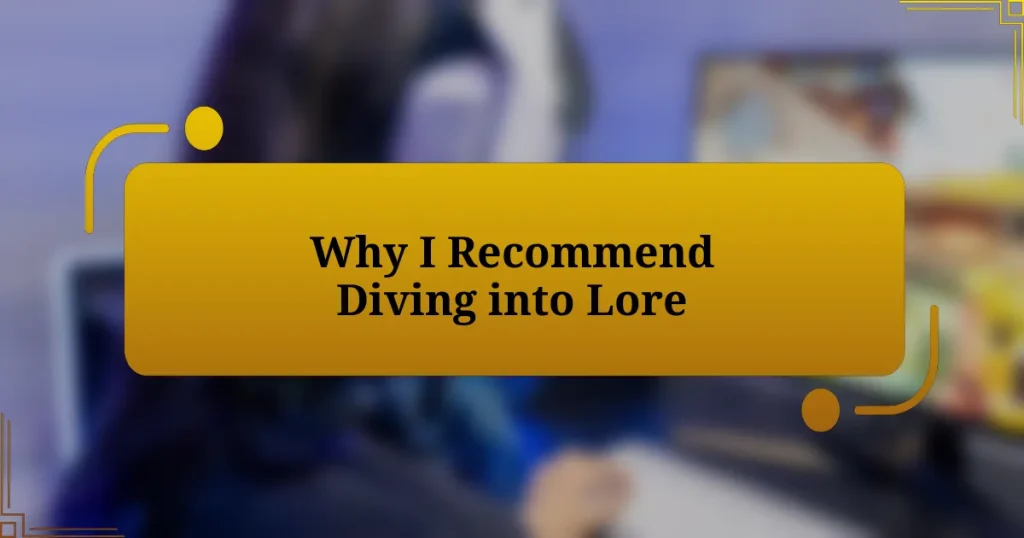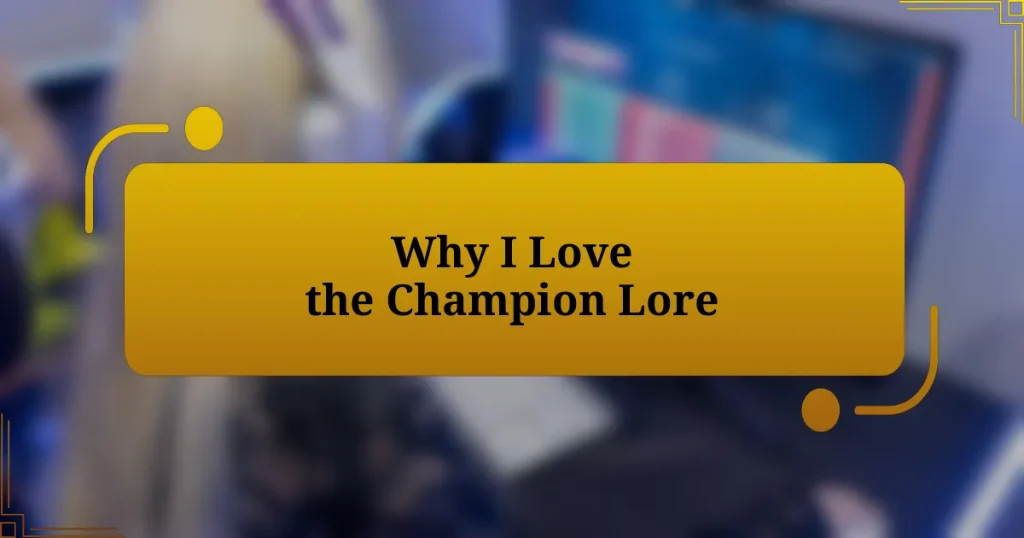Key takeaways:
- Objective control in League of Legends is crucial for success, as it shifts gameplay momentum and enhances team morale.
- Effective communication and teamwork are essential for successfully securing objectives like Baron, Dragons, and turrets.
- Strategic vision and clear timing when approaching objectives can significantly alter the game’s outcome.
- Understanding player roles and positioning during objective plays is vital for maximizing team performance and winning matches.
Author: Clara M. Ashford
Bio: Clara M. Ashford is an award-winning author known for her captivating literary fiction that explores the complexities of human relationships and the intricacies of personal identity. With a background in psychology and a passion for storytelling, Clara weaves rich narratives that resonate with readers on a profound level. Her debut novel, Whispers of the Heart, garnered critical acclaim and was shortlisted for the National Book Award. When she’s not writing, Clara enjoys hiking in the mountains of Colorado and volunteering at local literacy programs. She lives in Denver with her two adventurous dogs.
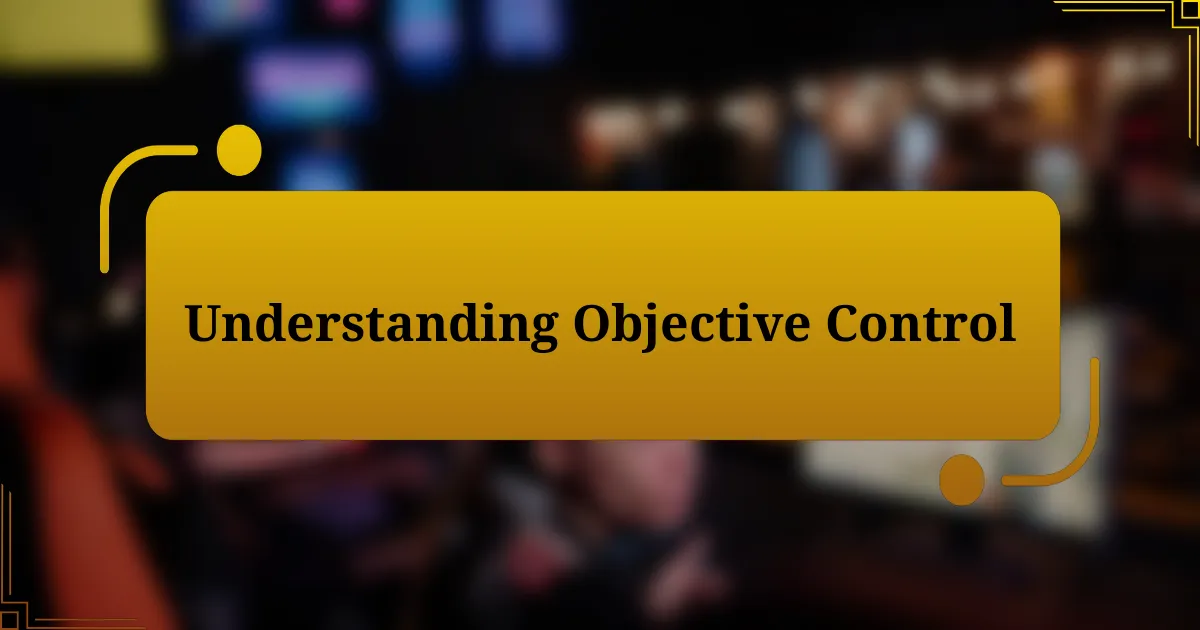
Understanding Objective Control
Objective control is all about prioritizing important gameplay elements that lead to victory in League of Legends. I remember when I first started playing, I often got caught up in chasing kills without thinking about securing dragons or barons. Have you ever felt the rush of getting that ace but realized it didn’t translate into map control? That’s the difference between merely fighting and strategically playing for objectives.
Understanding the intricate timing of objectives is vital. For instance, I’ve had games where securing the first dragon shifted the momentum significantly in my favor. The thrill of watching our team snowball after a well-timed objective play was an unforgettable experience. It made me wonder—how often do players underestimate the power of simply taking a turret instead of continuing to chase enemies?
In my opinion, effective communication with your team regarding objectives makes a world of difference. I’ll never forget a match where we lost a close game because we failed to coordinate a Baron steal despite having vision. The frustration was palpable, and it reinforced the idea that objectives should come first. So, what strategies do you have for rallying your teammates around objective control? The best teams I’ve played with had a clear plan, and it was amazing to see our teamwork paying off as we secured critical elements together.
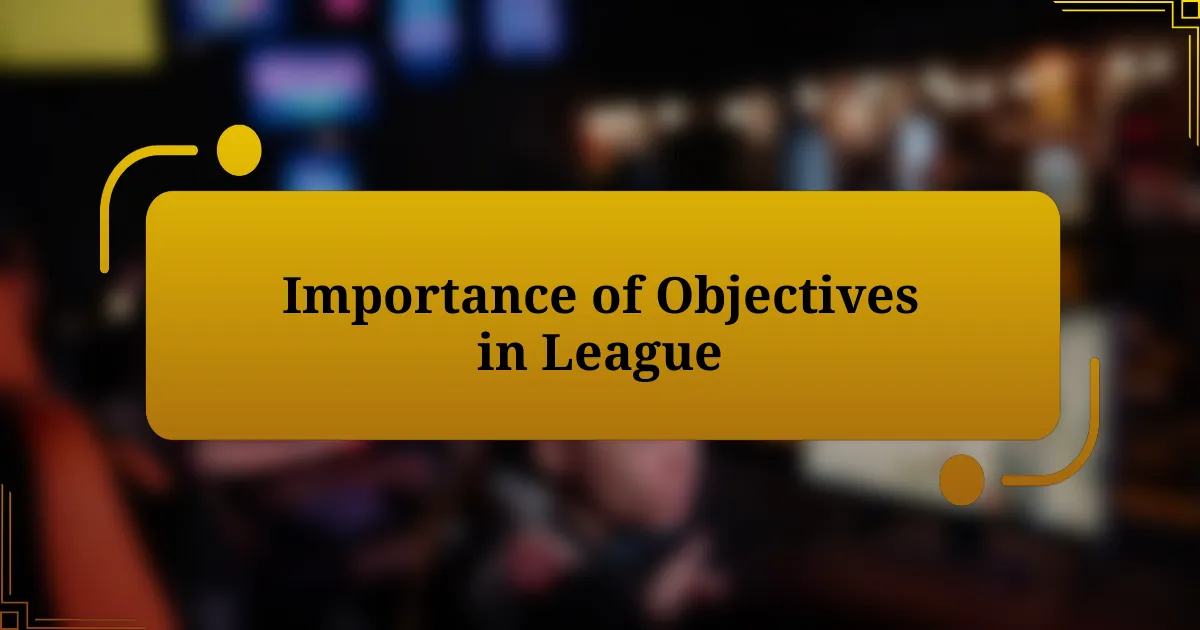
Importance of Objectives in League
Securing objectives in League of Legends isn’t just about strategic advantages; it’s about altering the game’s momentum. During one intense match, I remember how capturing the first dragon boosted our team’s morale and gave us the early edge. It’s like flipping a switch—suddenly, we felt invincible as we pushed lanes with renewed vigor. Have you ever had the thrill of that surge in confidence when your team takes control of the map?
Each objective brings unique rewards that can turn the tide of battle. For instance, taking down a turret not only grants gold but also opens up space for vision and rotation. I often think back to a game where we meticulously planned to take down inhibitors after securing Baron. The rush of pushing as a unit, knowing we were dictating the pace of the game, was utterly exhilarating. How often do you find yourself rallying your team to prioritize such crucial objectives over mere skirmishes?
Communication around objectives is key to maximizing their impact. I recall a frustrating situation where we hesitated before taking a dragon because of fears about enemy jungle presence. That hesitation cost us dearly; we lost both the dragon and a pivotal team fight shortly after. Those moments have taught me the importance of decisive calls and trusting my team. Have you ever experienced how quickly a plan can disintegrate through indecision? I’ve learned that clear communication can make or break objective control.
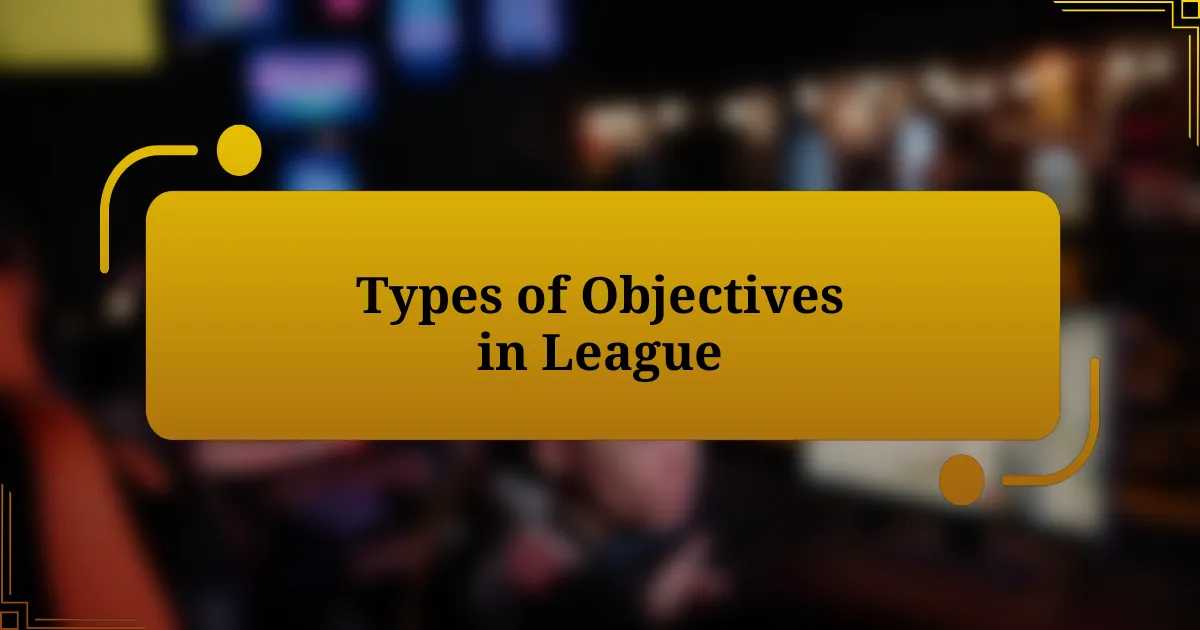
Types of Objectives in League
When we think about objectives in League of Legends, the primary types come to mind: turrets, dragons, Baron Nashor, and Rift Herald. Each serves a distinct purpose that can sway the course of the game. For example, I’ve always found that taking down an enemy turret feels like marking your territory—it’s a declaration that you’re not backing down. Have you ever felt that rush when you watch your teammates demolish that first turret? It’s a moment that builds your team’s confidence and opens up fresh opportunities to push further.
Dragons are another critical objective, each offering unique buffs that can enhance your team’s capabilities. The thrill of securing an Ocean Dragon, for instance, has saved my team in late-game skirmishes, providing vital sustain when we needed it most. I remember one match where our team was running low on HP during a crucial fight, but after snatching that Ocean Dragon, we turned the tables and secured multiple kills. It’s moments like these that highlight how strategic decisions around dragons can shift momentum dramatically.
Don’t overlook Baron Nashor, which is often considered the ultimate prize on the map. The feeling of controlling Baron, as a united front with my team, is unmatched—it’s the ultimate confidence booster. I vividly recall a game where our communication was spot on, leading to a perfectly timed Baron take. That single objective allowed us to steamroll down the lanes and claim victory swiftly. Have you ever felt that electrifying adrenaline rush when your team pulls off a well-coordinated Baron play? It underscores the importance of mastering objective control for winning the game.
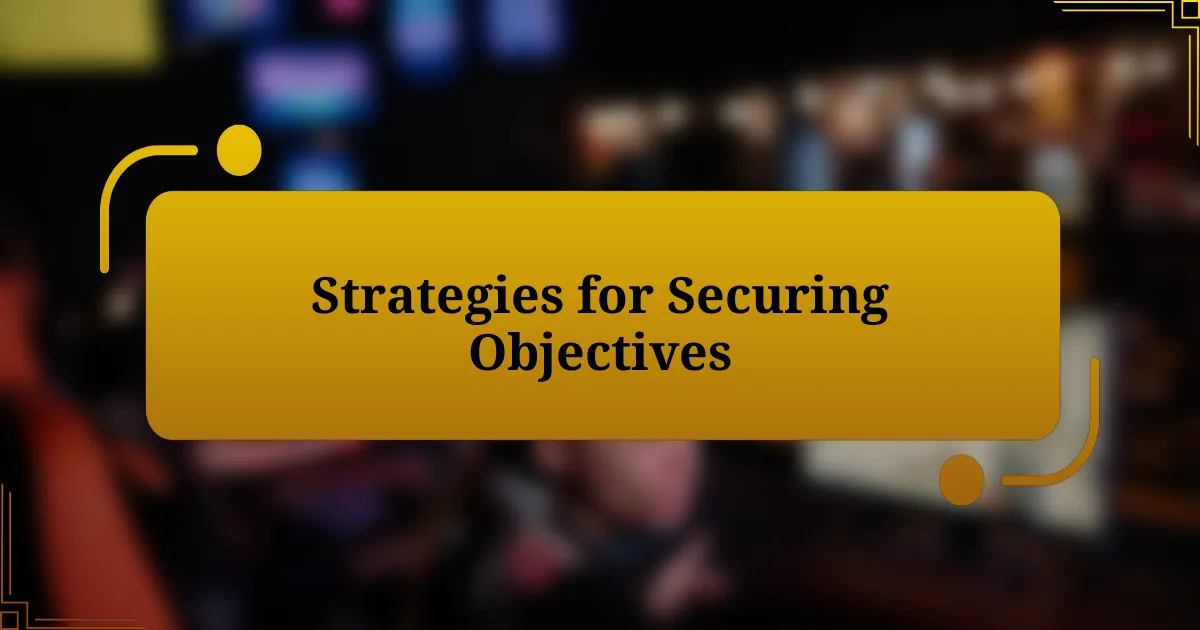
Strategies for Securing Objectives
Securing objectives requires effective communication among teammates. I can’t stress enough how vital it is to set up a clear vision with wards around key objectives. I recall a game where, despite being down in kills, we managed to secure Dragon after coordinating our vision placement meticulously. That moment of clarity brought our team together and proved that sometimes, a well-planned strategy can outplay raw stats.
Timing is everything. I’ve learned that knowing when to pull the trigger is just as important as executing the objective itself. There have been instances when I hesitated, thinking we could afford to wait, only to see the enemy team sweep in and take the prize unexpectedly. Have you ever watched your chance slip away because you weren’t decisive? It’s a tough lesson, but one that drives home the importance of seizing opportunities when they arise.
Finally, always consider your team composition when heading toward an objective. For example, playing as a support champion, I’ve learned that my role can be pivotal in providing utility and peel for our damage dealers when securing Baron. Once, in a tight match, we noticed the enemy team was prioritizing a flank. Because I positioned myself to protect our carries, we managed to secure that Baron uncontested. The exhilaration of that moment taught me that each player’s role can significantly affect objective control—and ultimately, the game’s outcome.
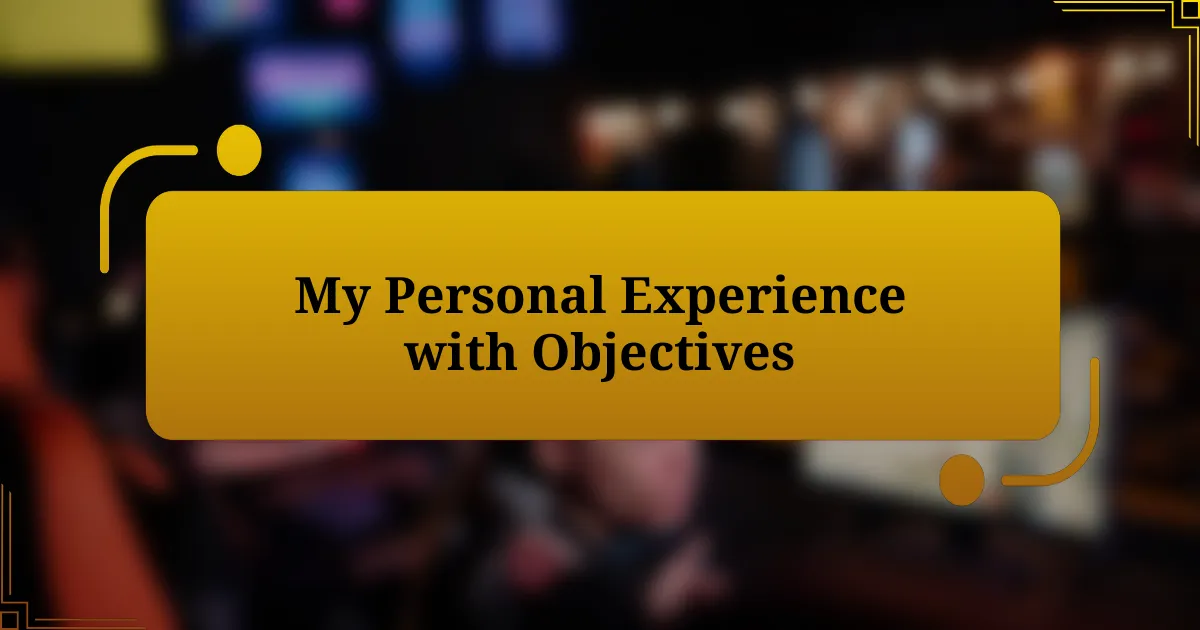
My Personal Experience with Objectives
When I reflect on my own journey with objectives in League of Legends, I realize how pivotal Baron has been in my games. In one particularly intense match, I remember our team was behind, and the atmosphere was tense. As we approached Baron, I felt the pressure mounting. The moment we secured it felt electric—almost like a collective sigh of relief. Have you ever experienced that rush, when a single decisive play shifts the momentum of the entire game? It stays with you.
In another instance, I learned a hard lesson about the importance of positioning when going for Dragon. I was overly eager to engage, but my positioning left our carry exposed. Watching them fall almost instantly reminded me that my role isn’t solely about attacking objectives; it’s about ensuring my team can participate in the fight. That realization was sobering and prompted me to think critically about how I approach each objective.
I find that sometimes, the fear of losing an objective can overshadow the joy of securing it. I often ask myself, “Am I too cautious?” There was a game where we could have taken an early Herald but hesitated, only to watch our opponents grab it confidently. That moment taught me the balance between being cautious and aggressive—knowing when to choose action over patience can be the difference between victory and defeat. Each game is a fresh opportunity to improve, and I’m constantly learning how to navigate that delicate dance.
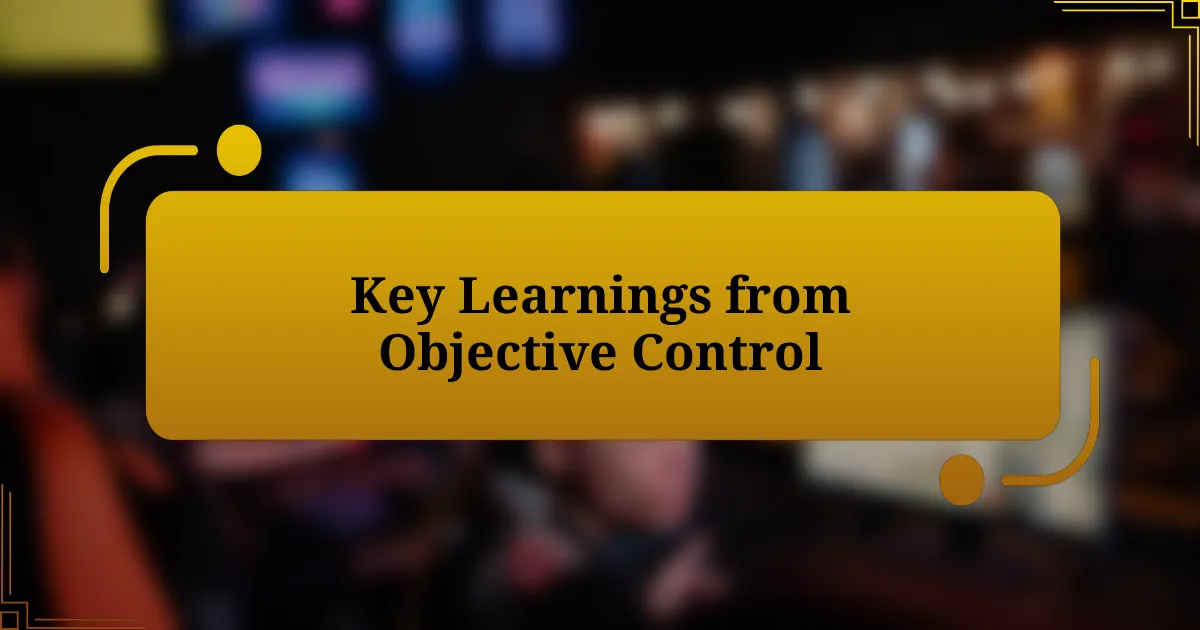
Key Learnings from Objective Control
Mastering objective control in League of Legends has taught me about the delicate balance between aggression and patience. I recall a game where our team secured an early Dragon, only to overextend in pursuit of a kill, leading to a rapid counterattack that cost us the game. It struck me that while securing objectives can provide significant advantages, overcommitting can swiftly turn the tides against you. Have you ever felt that rush of adrenaline when chasing a kill only to find yourself caught in a well-timed ambush? This made me realize that maintaining focus on the objectives should always be prioritized over the thrill of hunting champions.
One key learning is the necessity of communication while positioning for objectives. In a recent match, I experienced how effective calling can change everything. We coordinated a Baron play with clear signals, and the synergy felt surreal. The rush of successfully executing that strategy and watching our opponents scramble was a moment of pure excitement. It reinforced my understanding that teamwork is at the heart of successful objective control, and it’s important to share your thoughts and strategies with your teammates.
Another lesson that resonated deeply is understanding the timing of objective control relative to the game state. In one memorable match, we waited until our enemy was distracted before confidently taking the Rift Herald. At that moment, I felt our awareness pay off big time. I encourage you to ask yourself, “Do I always assess the game before deciding to secure an objective?” Practicing this kind of situational awareness transforms your playstyle and can turn matchups in your favor.
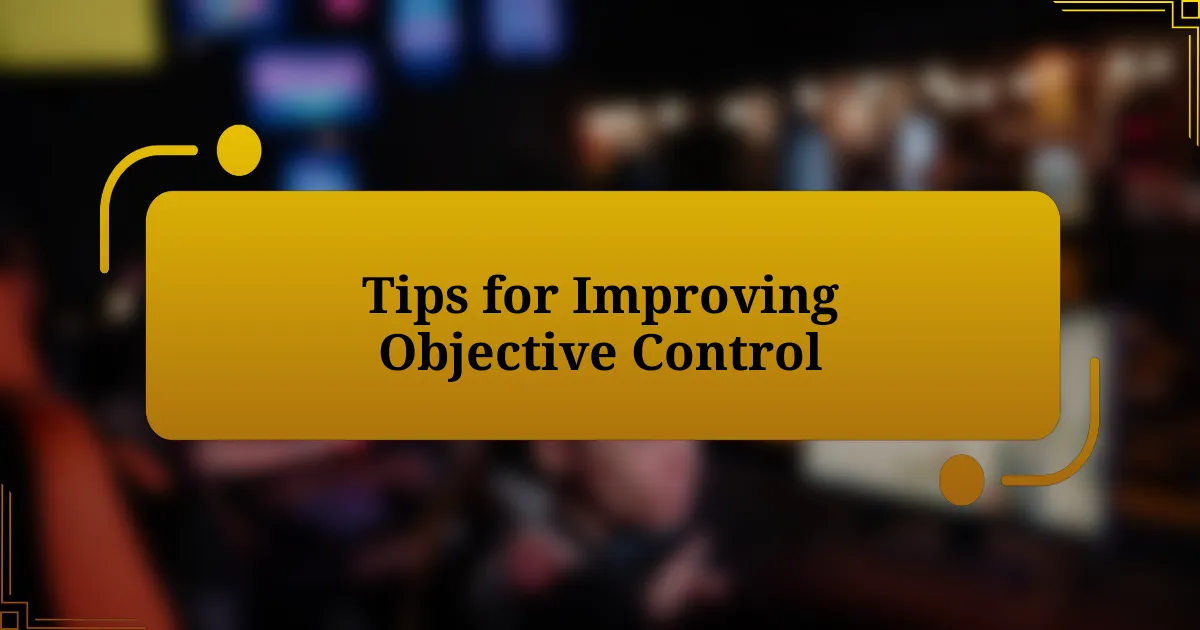
Tips for Improving Objective Control
One tip for improving objective control is to develop a solid vision strategy. I remember a game where our lack of wards near Baron led to a devastating ambush. It was a stark reminder that vision makes or breaks objective plays; without adequate information, any move can quickly backfire. Have you found yourself in a similar situation? Investing in wards not only enhances safety but allows your team to make informed decisions.
Another aspect I’ve learned is the importance of adapting your playstyle to your role. As a jungler, I used to rush into fights without considering my team’s position. I recall a moment when I assessed our team’s readiness before engaging for Dragon, and it resulted in a successful steal and an unexpected win. It highlights that understanding your role and when to take the lead or follow can greatly impact your objective control.
Lastly, mastering the art of zone control during key objectives can make a world of difference. I’ll never forget a tense Baron fight where we strategically positioned ourselves to deny entry to the enemy. By controlling the area and forcing them to engage on our terms, we clinched the objective effortlessly. How often do you consider your positioning relative to the objectives? Developing this awareness can help you create opportunities for your team and secure more objectives.











